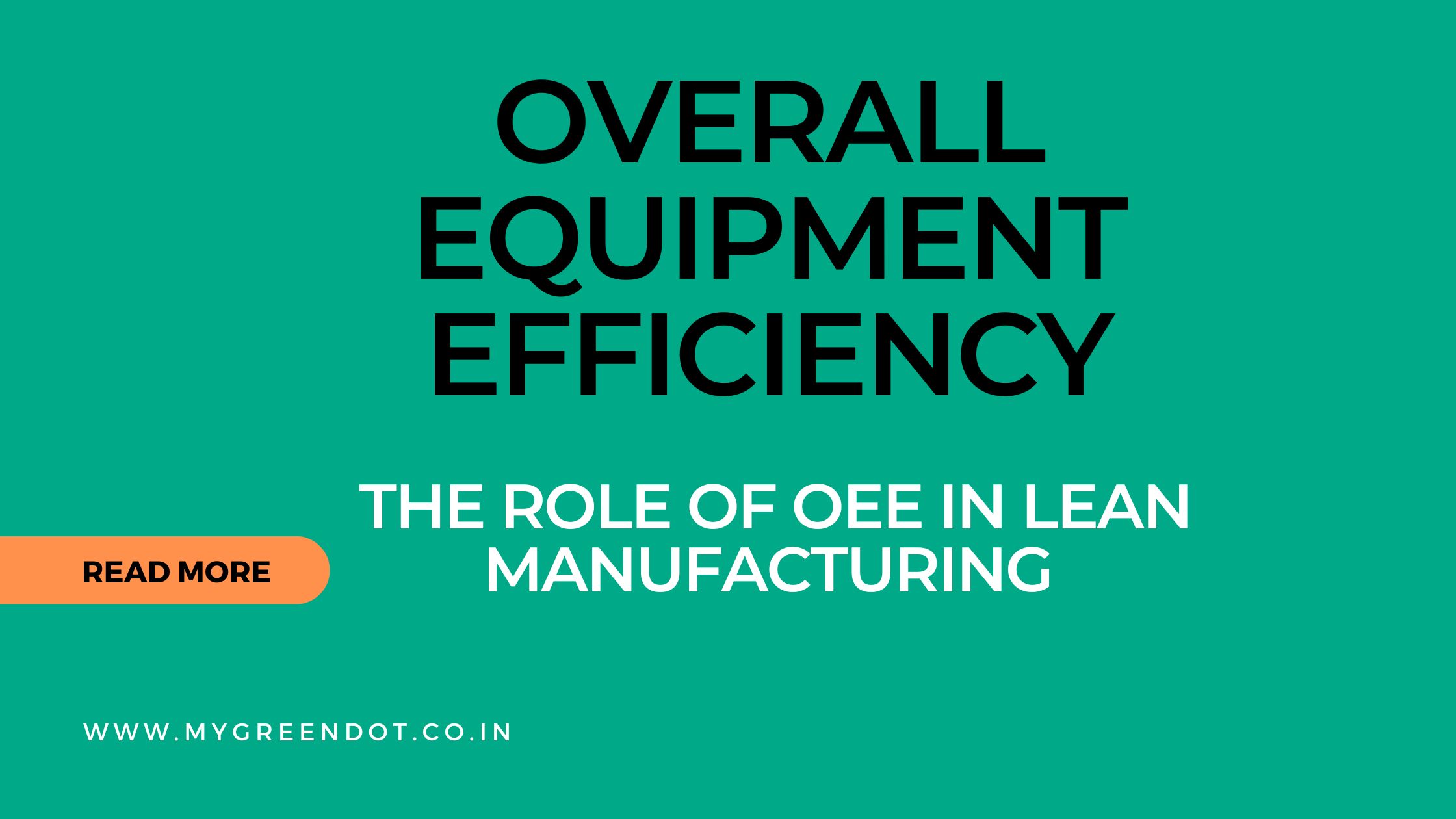Introduction:
In the world of lean six sigma consulting, efficiency is the name of the game. With lean manufacturing principles driving the quest for perfection, organizations constantly seek methods to eliminate waste, improve processes, and enhance productivity. One of the most powerful tools in this endeavor is Overall Equipment Effectiveness (OEE). This blog explores the critical role of OEE in lean manufacturing and how it contributes to achieving operational excellence.
Understanding OEE:
Overall Equipment Effectiveness is a comprehensive metric that measures the efficiency and effectiveness of manufacturing equipment. OEE provides a clear picture of how well equipment is utilized during production by evaluating three key components:
1. Availability: Measures the percentage of scheduled time that the equipment is available to operate. This accounts for unplanned downtime and maintenance.
2. Performance: Assesses whether the equipment is operating at its maximum potential speed.
3. Quality: Evaluates the proportion of good parts produced versus the total parts produced.
OEE = Availability × Performance × Quality
Lean Manufacturing Principles:
lean six sigma consulting focuses on creating more value for customers with fewer resources by minimizing waste and optimizing processes. The core principles of lean include:
1. Value: Defining what is valuable to the customer.
2. Value Stream: Mapping all steps that bring a product or service to the customer.
3. Flow: Ensuring smooth and uninterrupted workflow.
4. Pull: Producing only what is needed, when it is needed.
5. Perfection: Continuously seeking ways to improve and eliminate waste.
The Intersection of OEE and Lean Manufacturing:
OEE and lean six sigma consulting are intrinsically linked, with OEE serving as a critical metric for identifying and eliminating waste. Here’s how OEE plays a vital role in lean manufacturing:
1. Identifying Waste:
- Downtime (Availability Loss): By tracking equipment availability, OEE helps identify unplanned downtime and bottlenecks. Lean practices then target these areas for improvement, reducing wasted time.
- Speed Loss (Performance Loss): OEE measures the speed at which equipment operates compared to its maximum capability. Lean initiatives focus on optimizing processes to ensure equipment runs at its best possible speed.
- Defects (Quality Loss): OEE’s quality component highlights the production of defective parts. Lean manufacturing employs techniques like root cause analysis and Six Sigma to reduce defects and enhance quality.
2. Continuous Improvement:
- OEE provides real-time data and insights, enabling organizations to implement continuous improvement initiatives. Lean manufacturing relies on this data to identify opportunities for kaizen (continuous improvement) activities.
3. Resource Optimization:
- Lean manufacturing aims to do more with less. By improving OEE, organizations can maximize the use of their existing equipment and resources, leading to better overall efficiency and cost savings.
4. Employee Engagement:
- Both OEE and lean manufacturing emphasize the importance of involving employees in the improvement process. OEE metrics can be shared with teams to motivate and engage them in identifying inefficiencies and developing solutions.
Case Study:
One of the shoe lean six sigma consulting industries that implemented OEE tracking as part of its lean transformation. Initially, the plant’s OEE score was 60%, with significant losses in availability due to frequent breakdowns. By focusing on predictive maintenance and employee training, the plant reduced unplanned downtime by 40%, boosting its OEE to 75%. This improvement translated to increased production capacity, reduced costs, and higher customer satisfaction.
Conclusion:
OEE is more than just a metric; it’s a vital tool for achieving lean six sigma consulting goals. By providing a clear and actionable picture of equipment effectiveness, OEE helps organizations identify and eliminate waste, optimize processes, and drive continuous improvement. As a management consultant with 20 years of experience, leveraging OEE in lean manufacturing can significantly enhance your clients' operational performance and lead them on the path to excellence.
By integrating OEE into lean manufacturing strategies, companies can unlock their full potential, ensuring they remain competitive in an ever-evolving market.



